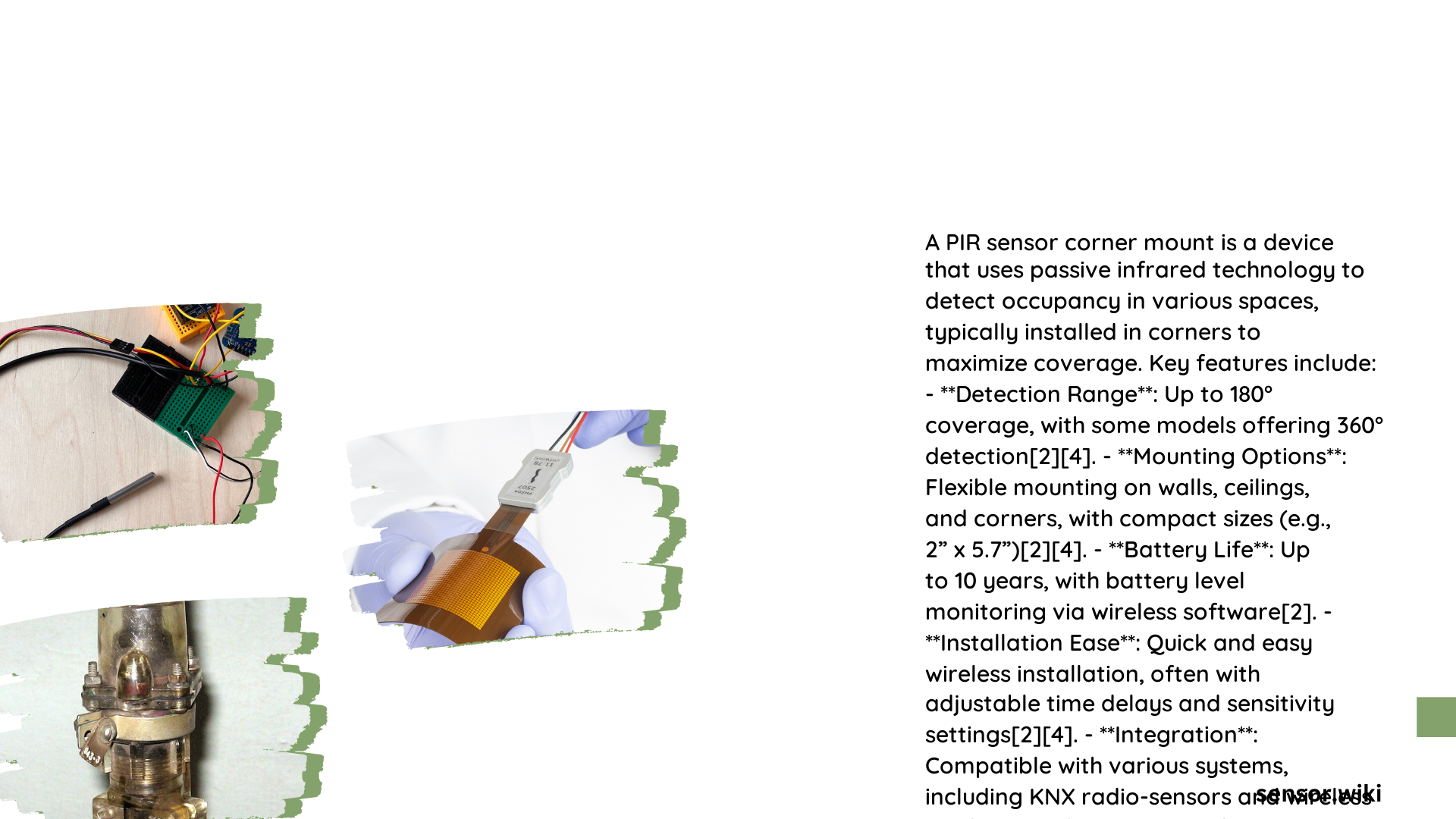PIR sensor corner mount represents a critical security technology enabling precise motion detection in residential and commercial spaces. By strategically positioning motion sensors at 45-degree angles in room corners, users can maximize detection coverage, minimize blind spots, and enhance overall surveillance effectiveness. This comprehensive guide explores the nuanced techniques, technical specifications, and best practices for implementing an optimal PIR sensor corner mount solution.
What Makes PIR Sensor Corner Mount Unique?
PIR (Passive Infrared) sensor corner mounts offer specialized motion detection capabilities by leveraging geometric positioning and advanced sensing technologies. Unlike traditional wall-mounted sensors, corner installations provide:
- Wider Detection Angles: Capture movement across multiple room sectors
- Reduced Blind Spots: Eliminate potential security gaps
- Enhanced Coverage: Maximize surveillance without multiple sensor installations
How High Should a PIR Sensor Corner Mount Be Installed?

Recommended Installation Heights
| Height Range | Measurement | Optimal Coverage |
|---|---|---|
| Standard | 2.0-2.2 meters | 80-90% detection |
| Extended | 2.3-2.5 meters | 70-80% detection |
| Maximum | 2.6-3.0 meters | 50-60% detection |
Key Placement Considerations
When installing a PIR sensor corner mount, consider these critical factors:
- Room Geometry: Analyze room layout and potential movement paths
- Sensor Specifications: Review manufacturer’s recommended installation guidelines
- Obstruction Assessment: Ensure no furniture or objects block sensor’s field of view
What Tools Are Required for PIR Sensor Corner Mount?
Essential installation tools include:
- Power drill
- Mounting screws
- Wall anchors
- Level
- Measuring tape
- Pencil for marking
How to Achieve Optimal Angle Adjustment?
Angle Optimization Strategies
Proper angle adjustment is crucial for maximizing PIR sensor performance:
- Primary Angle: 90 degrees perpendicular to expected movement
- Secondary Angle: 45-degree corner positioning
- Vertical Tilt: 10-15 degrees downward for improved detection
What Are Common Compatibility Challenges?
Sensor Model Variations
Different PIR sensor models present unique mounting requirements:
- Honeywell Lyric SIXPIR: Specific corner mounting plate
- Generic Models: Adaptable mounting mechanisms
- Professional Systems: Custom bracket configurations
Best Practices for Successful Installation
Checklist for PIR Sensor Corner Mount
- [ ] Verify installation height (2.0-2.2 meters)
- [ ] Clear potential obstructions
- [ ] Test sensor coverage before final mounting
- [ ] Ensure secure attachment
- [ ] Calibrate sensitivity settings
Technical Performance Metrics
Detection Zone Characteristics
| Metric | Typical Performance |
|---|---|
| Horizontal Coverage | 90-110 degrees |
| Vertical Coverage | 60-80 degrees |
| Typical Range | 8-12 meters |
Advanced Troubleshooting Tips
- Use metal mounting brackets for enhanced stability
- Consider temperature compensation features
- Implement periodic sensitivity recalibration
- Protect sensors from direct sunlight exposure
Conclusion
Mastering PIR sensor corner mount installation requires understanding technical nuances, precise positioning, and systematic approach. By following comprehensive guidelines, users can create robust motion detection environments.
